Amazing
Military Officer Just Wanted To Get Home, When Man Confronted Her On Plane

Packed plane rides tend to be the worst because if you’re not lucky enough to get on early, you get stuck with whatever is left. And that usually means being cramped in a middle seat squished between two others. It might be livable on a short flight, but a long flight can be torture sitting like that. For Jessica’s case, it was obvious to her when boarding that her flight was going to be a miserable experience. Everything was taken, and the only seat left was a middle seat in a cramped can of a ride. However, things got weird before she could even get her bag in the storage and sit down. Instead of sitting down, a man walked up and told her she couldn’t sit in the seat she finally found. The reason why just about knocked her off her feet.

Training Forgotten
Jessica had been in the military for a while already and had gone through multiple training scenarios for stressful situations in battle or under duress. But for some reason, all her situational control went out the window when the man on the plane confronted her. Her brain seemed to freeze and she started shaking. What the hell?

Trying to Get Home
The trip had been a long one already. Jessica was trying to get home on the holiday so she could see her family and familiarity again. She had been on a long tour of duty, and each day closer to the vacation time was tearing at her. Finally, getting her leave, she bolted for the airport, got her ticket and boarding pass, and was on the next plane out, but when she got to her seat something was off.

Modern Flying
The problem with modern flying today is that it suffers from too much cost-cutting and efficiency. Every ounce of space is squeezed out to make every plan produce as much revenue as possible. That means seats are cramped, even for the smaller-sized person. However, flying still remains the fastest way to get to a distant location. So, Jessica wasn’t going to complain much when her time came up and she was able to get a ticket home.

An Odd Number
Jessica was already an odd number in the military. She was military officer in an organization that was predominantly men and lead predominantly by male officers. And someone noticed her rank when she got on board the plane that day.

Flying Coach
Most people fly economy or coach. It’s the most inexpensive plane ticket to get, and the difference between coach and business is tremendous in cost. Jessica was no exception, and an economy ticket was what she should have to deal with to get home timely. Cramping was just part of the necessary evils to use flight for fast travel.

Seat 31B
She had boarded the plane in her fatigues uniform, which showed off her rank for those who were paying attention. Her bag was slung over her shoulder, and Jessica’s boarding pass had the big numbers and letter of 31B as her seat. So, she shuffled her way past the business section with the expansive leg room, making her jealous along the way. But there was no way Jessica could have afforded the upgrade.

Noticed
As Jessica worked her way to the back of the plane to get to her seat, another person was talking to a stewardess specifically about Jessica. As the soldier finally got her way back to row 31 in coach, she hefted her bag into the overhead cabin and prepared to work her way into the middle seat to sit down. And she waited, and waited, and waited. The plane wasn’t taking off.
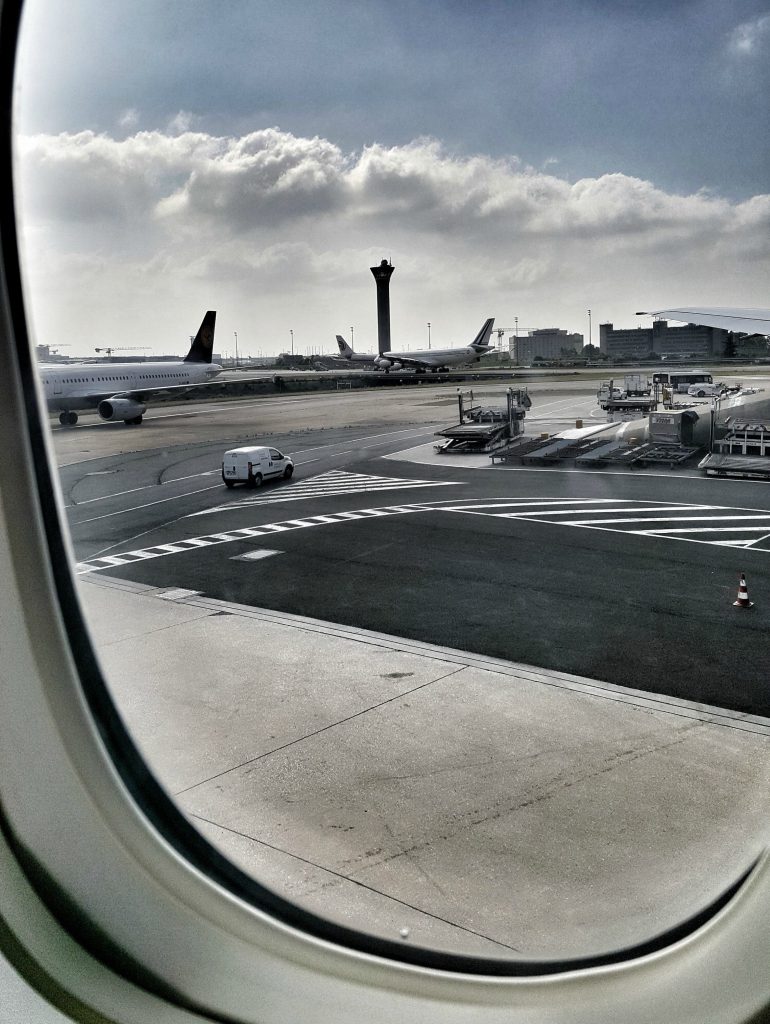
What Was the Delay For?
There wasn’t any kind of bad weather outside, which then meant something was going on with the plane or someone on it. Jessica wasn’t oblivious to her surroundings. Her curiosity started to get peaked as the minutes ticked on. She tried to ask a passing stewardess what the delay was being caused by but none appeared. Weird and weirder.

Odd Behavior
As she kept looking forward Jessica noticed the cabin crew were clumped together talking. There was a lot of chattering and zipping back and forth and talking on the plane phone. Something was up. It was clear the stewardesses were talking about a passenger as they were comparing boarding passes and the manifest. Then one of them started walking down the aisle.

A Uniform Stands Out
After a few seconds it was clear the stewardesses were focused on Jessica and looking at her as one of them approach. They were also laughing. Jessica’s edge started to rise. Something was about to happen, and it involved her.
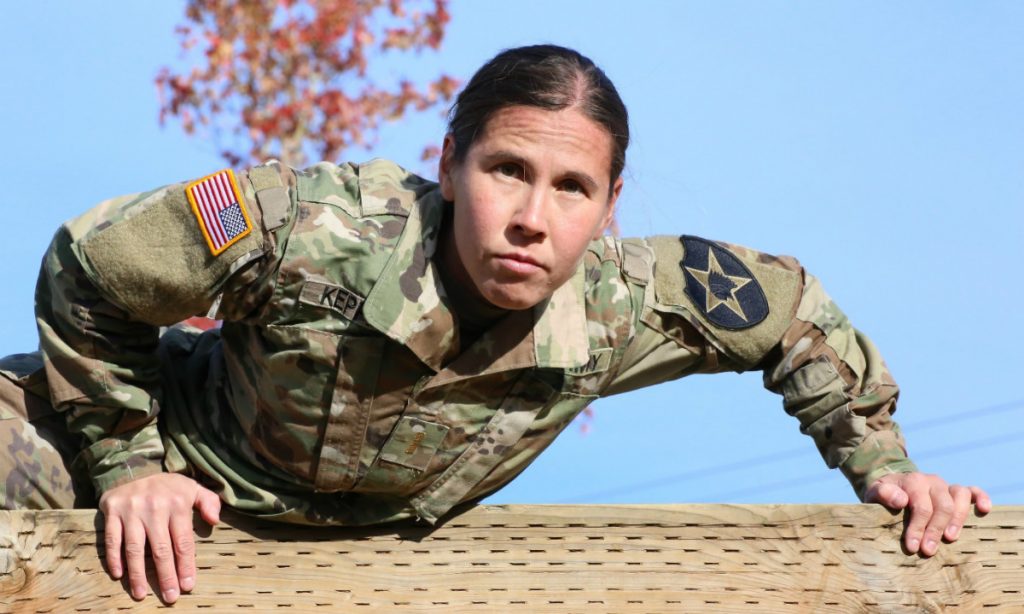
Military Training
All military are unfortunately trained to anticipate uncomfortable situations when they travel. The concept of the training came from the 1970’s when soldiers were returning home from Vietnam and would be attacked or spit on at the airport on trains by Americans protesting the war. By the 1980’s, traveling soldiers were also targets for terrorists. No surprise, Jessica was well trained for the unexpected, but she was also tired and just wanted to get home. She didn’t need this.

The Stranger
From a different angle Jessica noticed a tall man was also making his way towards her. He was in a very nice suit and his eyes stood out. She also noted his confidence; he walked like someone who knew how to go after what he wanted.

Approaching
The man was coming in Jessica’s direction as well. And he was looking at her too, just like the stewardess was. As they reached Jessica’s seat, the man began to speak directly to here. He wanted her attention, but the reason why caught Jessica totally off guard.

Seat Numbers
“You’re in my seat.” Jessica had to do a double take, “What?” He spoke again, “I was in your seat,” inferring she needed to move. Jessica was now entirely confused. He took the opportunity to clarify, “What does your boarding pass have?” He sighed, waiting for her to respond.

Refusing
Jessica shook her head. She knew what her boarding pass. “No, I’m 31B!” Her ticket had those numbers and letter printed on it clear as day. She pulled out the boarding pass and confirmed her thinking, what the hell was this guy talking about? The stewardess was nearby with another, and Jessica looked at them to clear it up.

Explanation
The man decided to let Jessica in on the surprise. He recognized that she was an officer, and he was going to give up his seat in business class for her as thank you for her service. Jessica was floored.
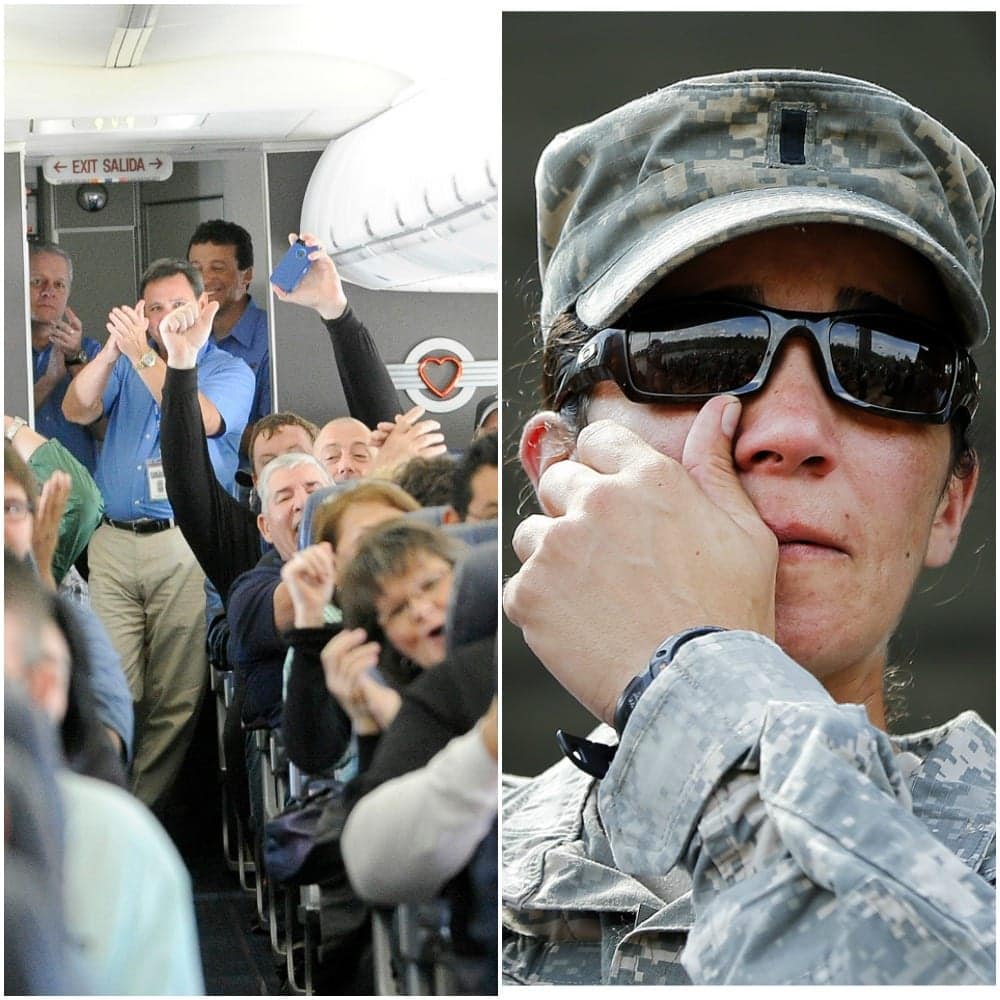
Deer in the Headlights
The man continued, offered Jessica his business class boarding pass, and reiterated it was a thank you for all she had done for her country. Jessica was in shock, she tried to refuse, but he made it clear Jessica was going to take the business class seat. The stewardesses nodded their heads.

Shock
The seconds it took for her to move, relocate and sit in the business class seat seemed like a blur. Suddenly she had more space on her trip than she knew what to do with. What just happened? Her muscles were sore and aching from the trip on top of the beating she had taken in officer training and her tour. She was tired. The seat felt good.
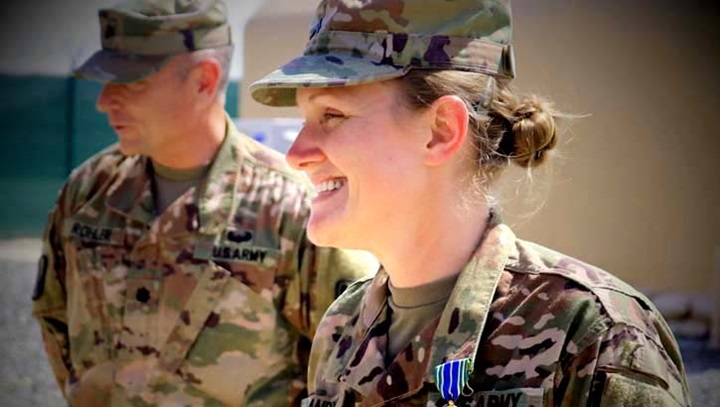
Feeling Gratitude
Jessica realized she would actually get some rest on the trip home. The mystery stranger had really done her a huge favor. But as relaxed as she got, Jessica couldn’t stop thinking about the man’s gesture.

To Say Thank You
Jessica got an idea. She pulled out a pen and starting writing a note. She also pulled out a $20 bill. Then she flagged a nearby stewardess. She then asked the stewardess to bring the note and the money to the man who had traded seats with her.

The Note
Jessica’s note was simple and to the point. She offered to buy the man a snack and drink on the plane on her, and added if everyone in the world was as nice as he was, the planet would be a better place.
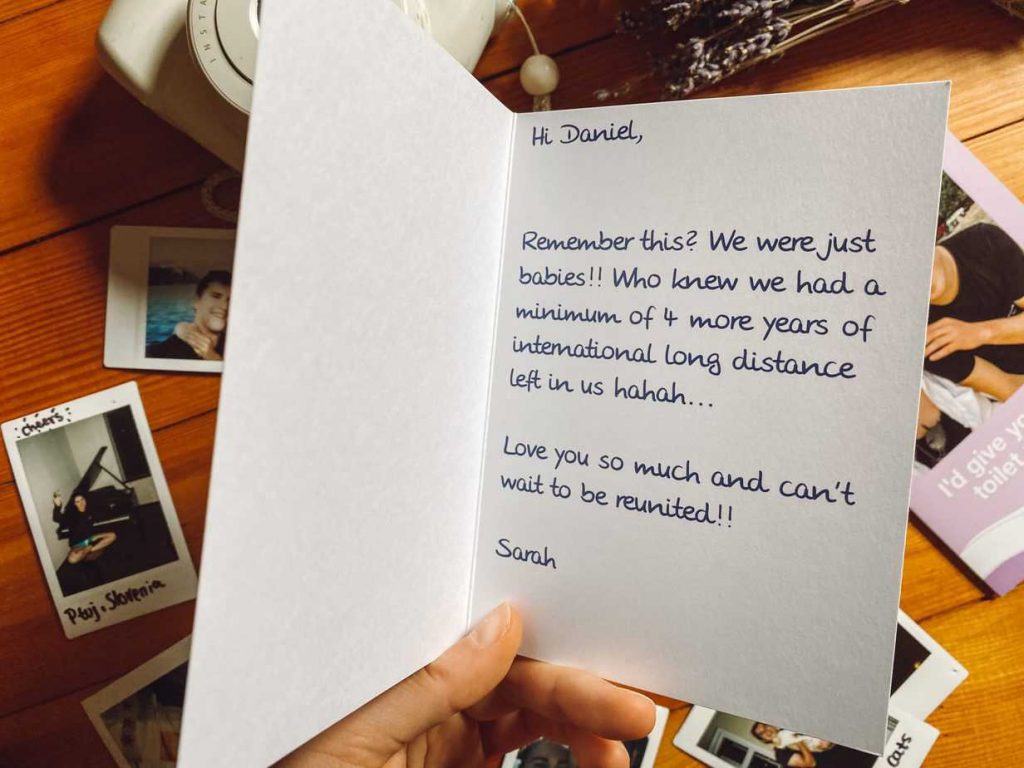
The Response
When it arrived, the man read the note and looked at it intently. However, he was not going to accept the gift. Instead, he wrote Jessica a response, asking her to dinner on him when they landed. Jessica’s just about giggled when she read the note. A date? He was handsome.

The Date Was Confirmed
Jessica agreed and, when they both got off the plane, she went to dinner with the stranger. They met at a nearby restaurant and started talking. Amazingly, all her exhaustion just flowed off of Jessica as they talked. Her excitement took over. For the military officer, it proved that there was still good in the world and being nice was still possible. For Jessica, she met someone who became very dear to her in the most unpredictable place in the world, up in the air.
Amazing
Mother and Daughter Graduate Nursing School Side by Side—Two Years After Mom Donated Kidney to Save Her Life
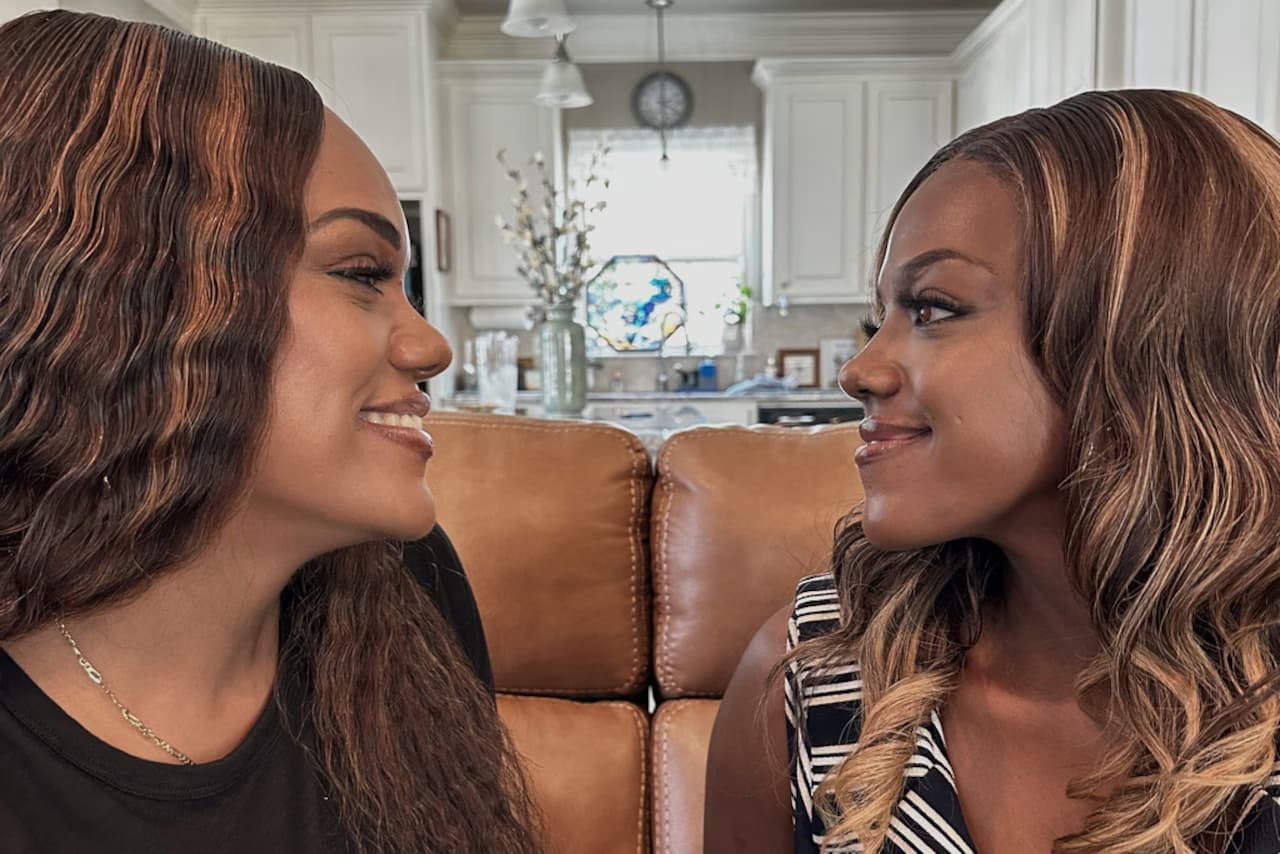
In a story of grit, love, and second chances, a mother and daughter crossed the graduation stage together this spring—just two years after one saved the other’s life.
Ambrealle Brown, 34, dreamed of becoming a nurse. But that dream came to a halt in 2016 when she was diagnosed with Focal Segmental Glomerulosclerosis (FSGS), a rare and progressive kidney disease that forced her to leave school and rely on daily dialysis treatments lasting up to 13 hours.
As her condition worsened, Brown’s optimism faded. She was exhausted—physically and emotionally. The long wait for a transplant weighed heavily on her, and hope felt increasingly out of reach.
But her mother, Nija Butler, wasn’t ready to let her daughter give up. Although doctors initially said she likely wasn’t a donor match, Butler quietly went in for testing. She didn’t tell her daughter—she didn’t want to raise hopes unless it was certain. Then came the call: Brown had a match.
“She told me she was getting a kidney,” Butler recalled. “And I told her, ‘It’s me.’”
In March 2023, surgeons at Tulane University performed Louisiana’s first-ever robotic kidney transplant, using a minimally invasive technique that helped speed recovery for both women. With her new kidney and a renewed lease on life, Brown returned to nursing school. Inspired by her daughter’s determination, Butler decided to join her.
For the next 16 months, they studied side by side, pushing each other through the grueling demands of their program at Baton Rouge General School of Nursing. And in April, they both graduated—together.
“I couldn’t have done it without her,” Brown said. “Nursing school is hard, and having her by my side made all the difference.”
Brown is now set to begin work in a burns intensive care unit. Butler, 48, will continue her work in psychiatric care.
The two women hope their story encourages others to never lose hope—and to consider the lifesaving power of organ donation.
“As parents, we always say we’d do anything for our children,” Butler said. “And I meant it—with all my heart.”
Amazing
Scientists Reveal ‘Olo’: A Never-Before-Seen Color Created with Precision Laser Tech

In a stunning leap forward for vision science, researchers have unveiled a color no human has ever seen before. The new hue—named olo—is described as an intensely saturated blue-green that falls outside the boundaries of the natural human color spectrum.
Published in Science Advances, the study comes from a collaboration between scientists at the University of California, Berkeley, and the University of Washington. At the heart of the discovery is a new experimental tool dubbed Oz, a laser-based system that allows researchers to stimulate individual photoreceptors in the human retina with unprecedented precision.
“The Oz system represents a new experimental platform in vision science,” the study states. It works by isolating and activating just one type of cone cell—specifically, the M cones responsible for detecting green light—while bypassing the other two (S and L cones, which are sensitive to blue and red light, respectively). This kind of targeted stimulation isn’t possible under natural viewing conditions, where any light usually activates multiple types of cones at once.
In controlled experiments using laser light directed into the eyes of five participants—all with normal color vision—scientists were able to generate a perceptual experience unlike anything in nature. By activating only the M cones, participants reported seeing a blue-green shade that felt completely novel and extraordinarily vivid.
“By activating only the M cones, we elicited a color beyond the natural human gamut,” the researchers wrote. They described olo as a color of “unprecedented saturation.”
This discovery doesn’t just expand our understanding of color—it could also have practical implications. The Oz platform may pave the way for more advanced research into visual processing, new treatments or diagnostic tools for color blindness, and potentially even new types of displays capable of showing colors previously thought impossible to reproduce.
As the study concludes, “This new class of programmable platform will enable diverse new experiments,” including deeper exploration into how flexible and adaptable human color perception really is.
With olo, the boundaries of the visible world just got a little wider.
Amazing
From Wheels to Wonder: Paralysed Skater Transforms Old Boards into Bold Sculptures

When Nick Harding lost the ability to skateboard, he never imagined he’d find a new way to stay connected to his lifelong passion — through art.
In 2019, Nick was suddenly paralysed by Guillain-Barré syndrome (GBS), a rare auto-immune condition where the immune system attacks the nervous system. What started as a sore hamstring quickly escalated into a medical emergency. Within an hour of arriving at the hospital, he was on life support. He spent 13 weeks in intensive care at Southmead Hospital in Bristol and seven months in recovery, relearning how to walk and use his arms.
“Skating has always been a huge part of my life,” Nick said. “Having an outlet for that desire to play with my favourite toy is what brought the sculptures about.”
With his old decks stacked in a corner and his body still rebuilding strength, Nick began experimenting. His early attempts to make practical items were shaky — his hands lacked coordination — so instead, he focused on creating something beautiful. With no prior carpentry experience, he turned to YouTube tutorials, teaching himself to shape, sand, and finish colorful, psychedelic forms from the layered wood of worn-out skateboards.
The process helped rebuild his dexterity, but it also served as a mental anchor. “I just focused on doing a little bit every day,” he said. “It was the process that felt good when I was at my lowest.”
Now, Nick sells his sculptures through his Etsy shop Mobius Maples and has gained fans from around the world. His pieces — all carved from donated, broken, or retired boards — are abstract, swirling forms that capture the movement and spirit of skateboarding.
But for Nick, it’s not just about the art or even the recovery. It’s about staying connected to the Bristol skate scene that shaped him. He donates pieces to skate competitions and charity auctions and even hides small keychains around the city for his Instagram followers to find.
“It wouldn’t be anything if it was just me,” he said. “It’s also people who give me their old boards. Interacting with the art and letting me be involved with things is what’s kept it going.”
“I want it to be something that adds to the community, and I’m so grateful that I still have the opportunity to do that.”
Through creativity, community, and resilience, Nick Harding has transformed adversity into something both healing and inspiring — turning the boards that once carried him across pavement into lasting works of art.
Amazing
Community Petition Saves Wally the Beaver from Euthanasia

Wally, a beloved beaver who became a community favorite in Northern Virginia, was saved from euthanasia thanks to the efforts of thousands of supporters who rallied together through an online petition.
Wally first gained popularity at Huntley Meadows Park in Fairfax County, where locals and visitors often saw him hard at work building dams. However, wildlife officials considered euthanizing him after concerns arose over flooding and tree damage caused by his dam-building activities.
The community swiftly stepped in, launching a petition that quickly gathered over 10,000 signatures. Advocates argued that the beaver’s positive impact on the ecosystem—creating wetlands and habitats for other wildlife—far outweighed any inconveniences.
Local officials eventually agreed, opting instead for a humane relocation effort. Wally will now be safely moved to a suitable habitat rather than being euthanized.
“This shows how much our community values wildlife,” said Julie Ames, the petition’s creator. “We’re thrilled our voices were heard.”
Residents celebrated the decision, highlighting how Wally’s survival symbolizes the growing awareness of peaceful coexistence with local wildlife.
Amazing
Third Eaglet Joins Big Bear’s Beloved Bald Eagle Family
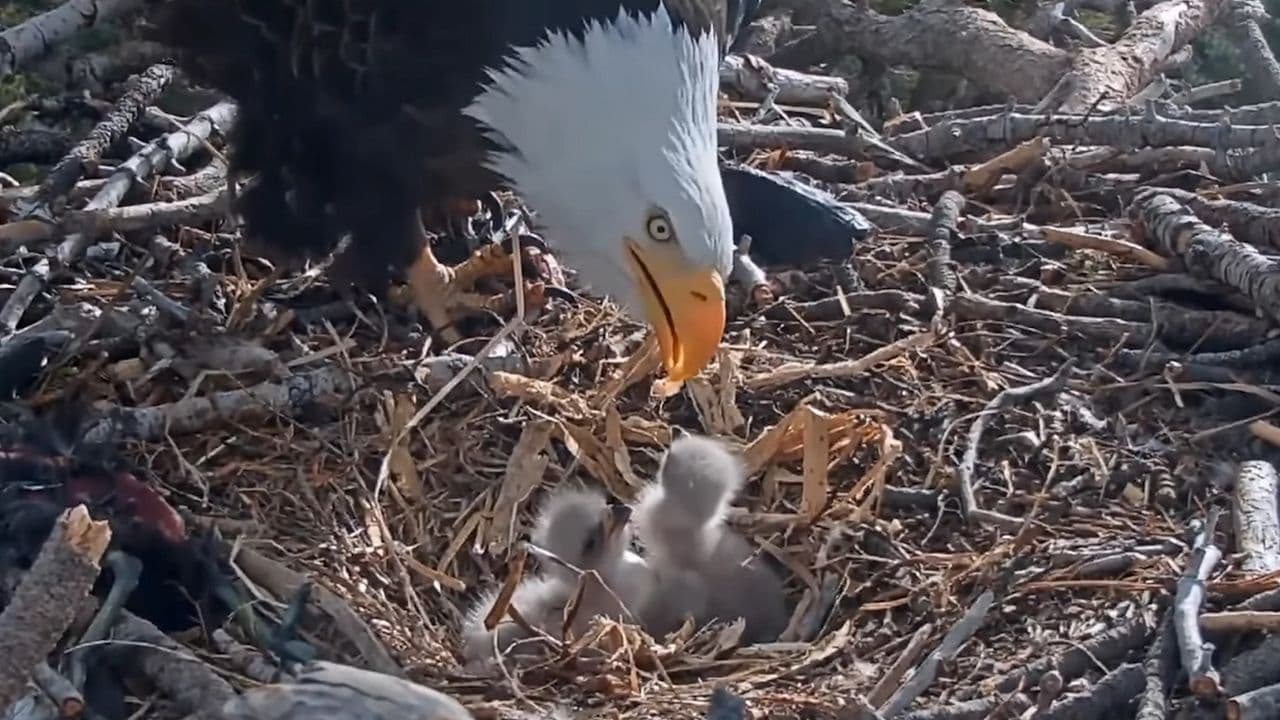
A third eaglet hatched yesterday in the much-loved bald eagle nest near Big Bear Lake, marking a delightful moment for the growing number of wildlife enthusiasts who have been closely watching the family online.
The nest, located in the San Bernardino National Forest near Big Bear, California, has been streaming live via the Friends of Big Bear Valley eagle cam. Observers were excited to witness the third chick hatch, a significant event considering that bald eagles usually lay two eggs, with three being somewhat unusual.
The parents, affectionately named Jackie and Shadow, are local celebrities among bird watchers. According to the Friends of Big Bear Valley, these parents have gained fame for their caring behavior, ensuring their chicks remain healthy and thriving despite the occasional harsh weather conditions.
“The hatch was smooth and perfectly timed,” said Sandy Steers, executive director of Friends of Big Bear Valley. “It’s heartwarming to see this family continue to flourish.”
Wildlife experts emphasize the importance of maintaining a respectful distance, reminding the public that the best way to enjoy and protect these birds is by observing remotely via the eagle cam.
Viewers can continue to monitor the eaglets’ development, celebrating each milestone as the chicks grow into young eagles over the coming weeks.
-

 OMG7 years ago
OMG7 years agoA Couple Gave Birth to the Most Beautiful Twins Ever
-

 OMG8 years ago
OMG8 years ago20 Rare Historical Photos
-

 OMG7 years ago
OMG7 years agoHilarious Airport Photos
-

 Cute7 years ago
Cute7 years agoMom Refuses to Let Daughter Eat Sugar and Years Later This is What She Grows Into
-

 OMG7 years ago
OMG7 years agoTop Secret Air Force One Facts That You Never Knew
-
OMG7 years ago
The Funniest Yearbook Photos Of All Time
-

 OMG7 years ago
OMG7 years agoRetired Mathematician Restores Log Cabin
-

 OMG6 years ago
OMG6 years agoWhat Happened When This ‘Duck Dynasty’ Legend Chopped Off His Beard?